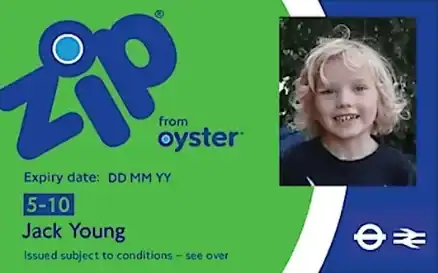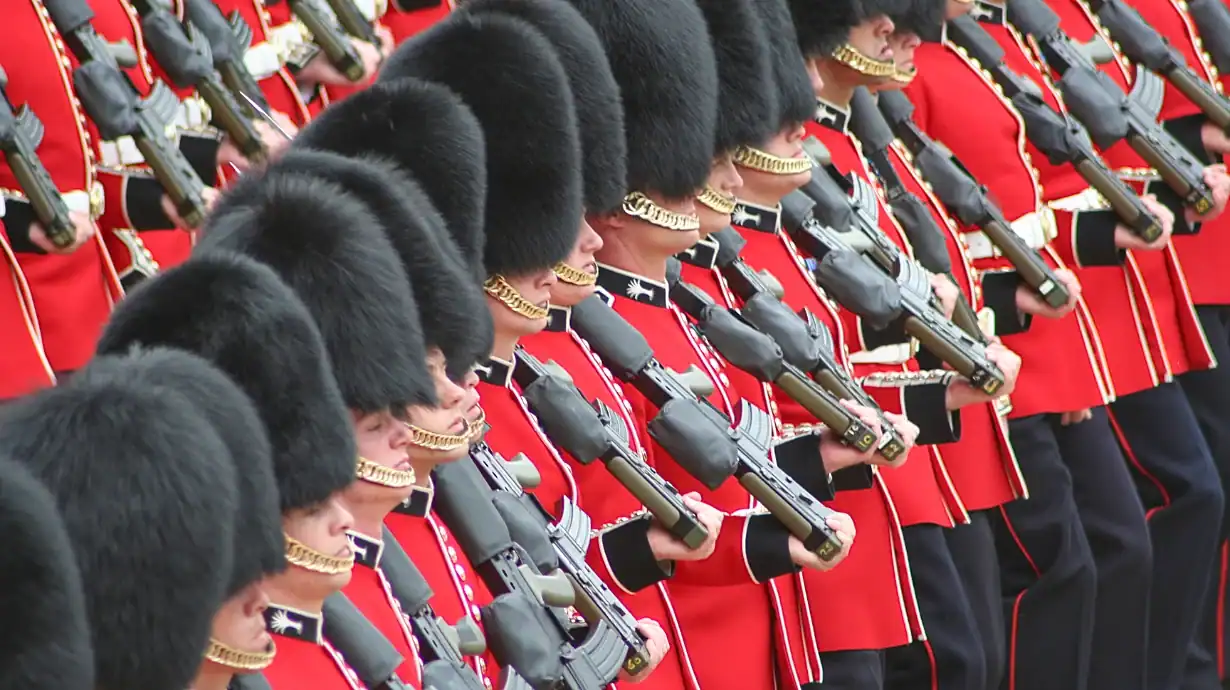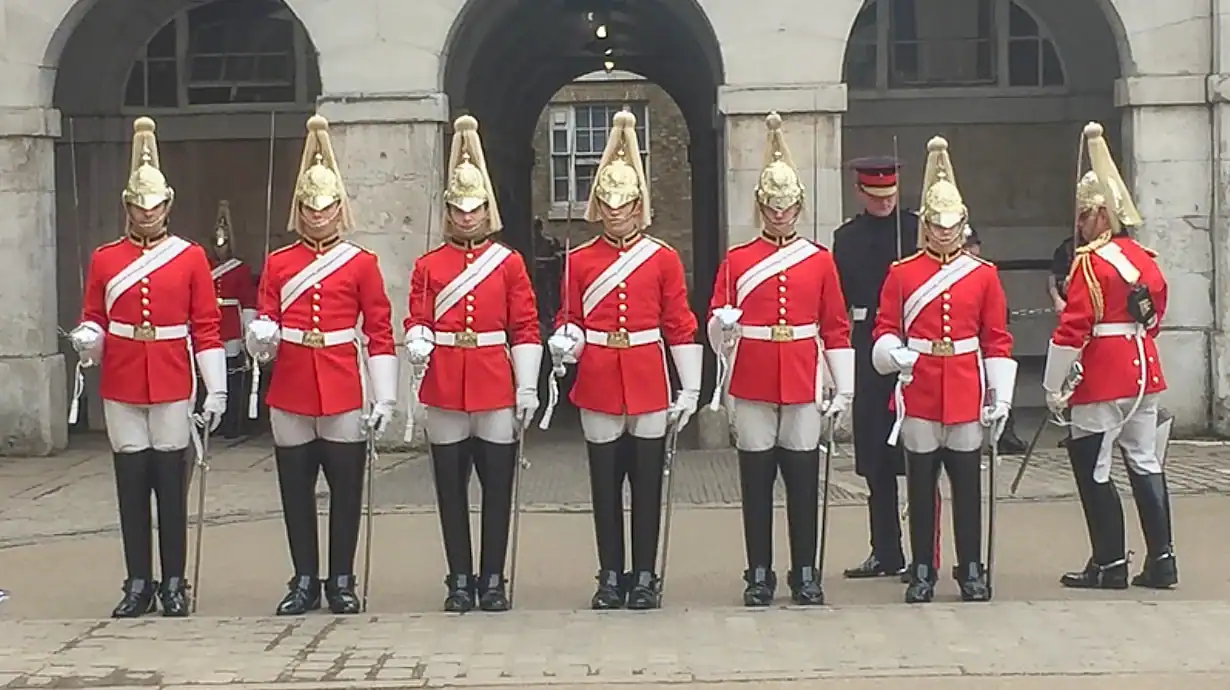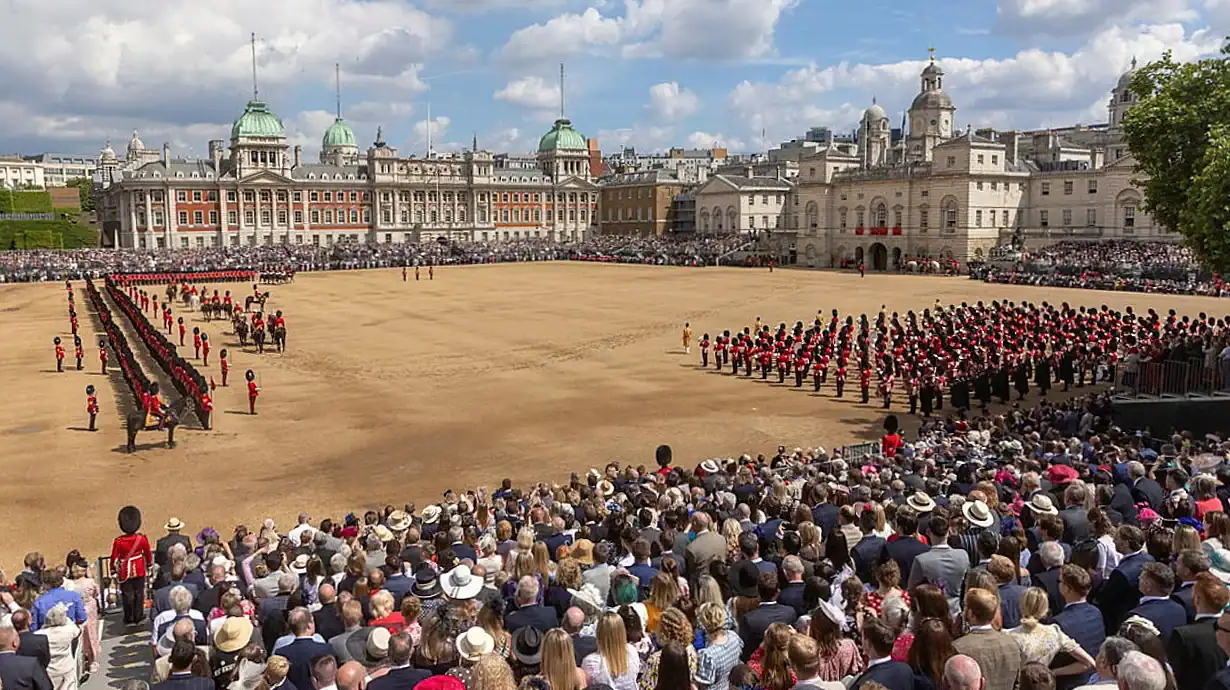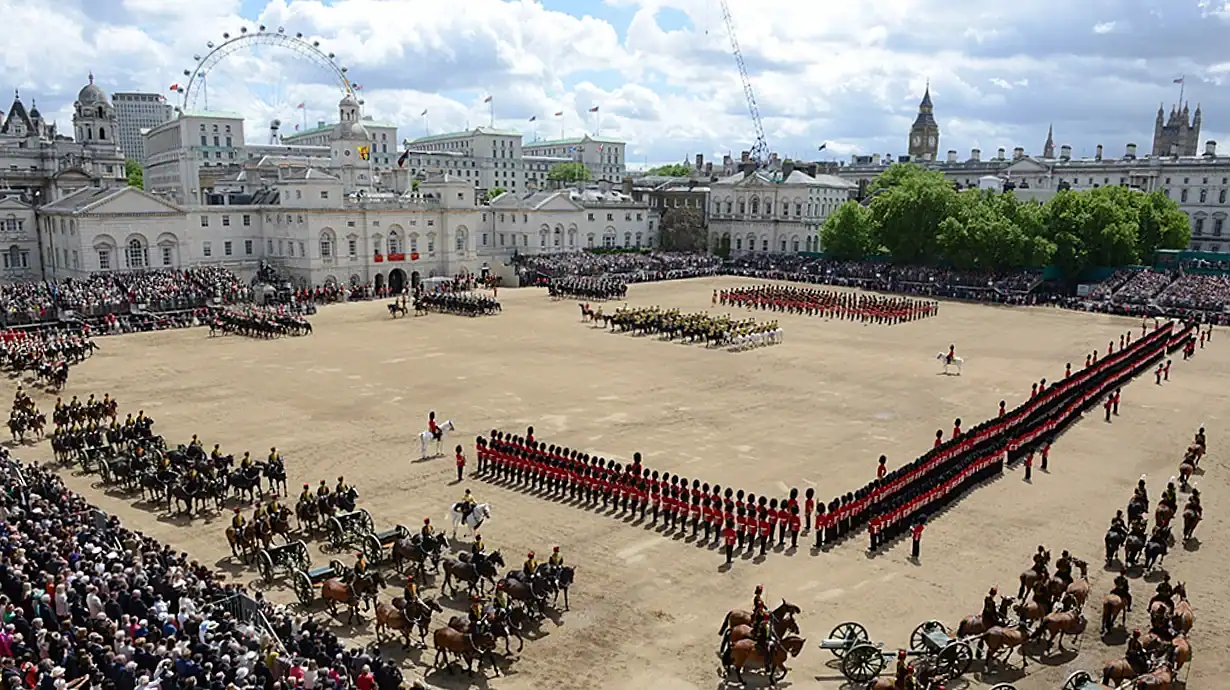If you walk down Whitehall between 10 AM and 4 PM the pavement will be heaving with people taking selfies by the sentry boxes. (After 4 PM the horses disappear and you get two Foot Guards instead. At 7 PM they’ll shut the gate and a solitary Foot Guard will be out of sight inside. At 7 AM they’ll re-open the gate and the horses will return at 10 AM.)
Horseboxes for the Household Cavalry on Whitehall
Everyone wants a photo of themselves standing next to a horse and when you’re waiting on the pavement it probably seems easy enough to get, but this is a big crowd. And you won’t appreciate quite how big it is until you turn around and find yourself facing fifty people all clutching their cameras like a rank of paparazzi. And behind them will be another row of curious tourists all peering down from the top deck of the passing buses at the gun cops on the gate and your wife and kids urging you to “stand closer, stand closer so you’re in the photo!”
 Photo: londondrum.com
Photo: londondrum.comThe standard manoeuvre seems to be to send the dads up first whilst the mums stand a safe distance away with the kids and the camera. They do this in order to make sure it’s safe (if dad gets kicked by the horse then it doesn’t matter – it will make a good photo). But he doesn’t want to keep the crowd waiting so he’ll put on a quick grin and a goofy salute and he’s outta there.
Horse Guards building and small courtyard
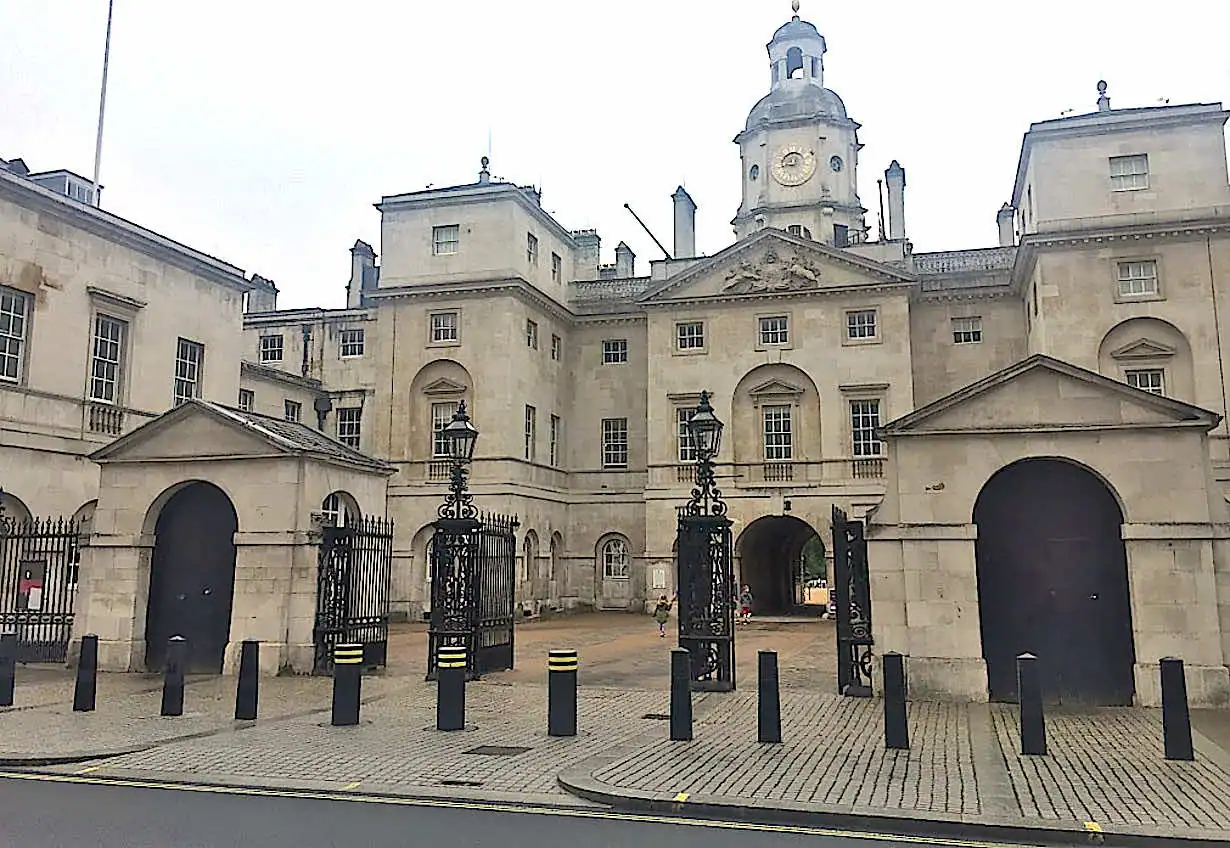 Photo: londondrum.com
Photo: londondrum.comIf you travelled back in time 350 years then the building would look pretty similar to today because this is where Charles II built a barracks for the Household Cavalry. His original one is long gone but it had the same central clock tower with two wings around a courtyard and a couple of sentry boxes outside his private garden (where St. James’s Park is today).
When Whitehall Palace burned down in 1698 William III moved his court a short distance down the Mall to St. James’s and the sentries started guarding entry to that instead. Then Queen Victoria moved her brood into Buckingham Palace so it became the approach to both palaces and that’s what Horse Guards is all about now – those horses aren’t there for your photos. They’re serving soldiers from the Queen’s Life Guard protecting the ceremonial approach to two Royal palaces.
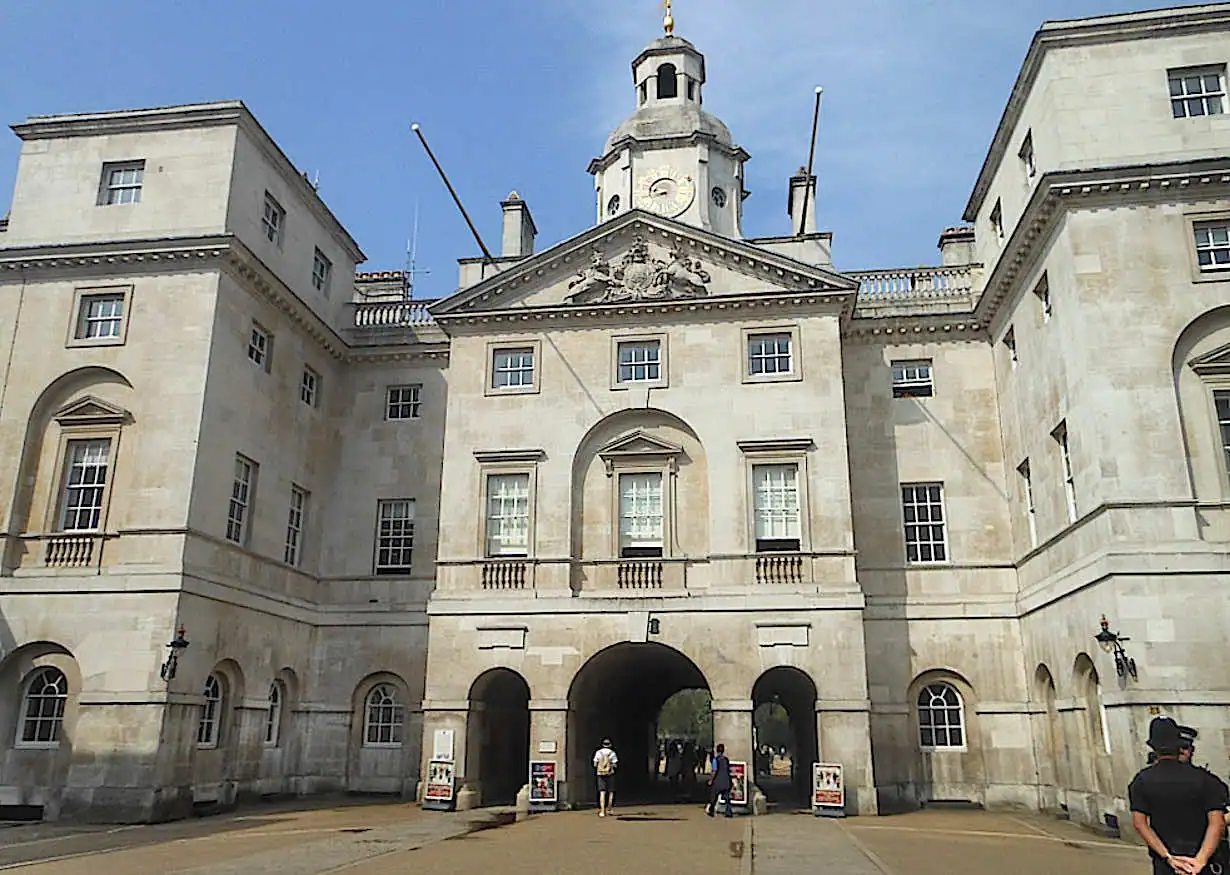 Photo: londondrum.com
Photo: londondrum.comWhen George II commissioned the present building in 1745 the army managed to shunt the cavalry into the northern wing and took over the central section for use as their headquarters all the way through the Napoleonic Wars.
Horse Guards military parade ground
The most famous part of Horse Guards is through that central arch… have a walk through there and you’ll find yourself standing in the parade ground where they do Trooping the Colour and Beating Retreat.
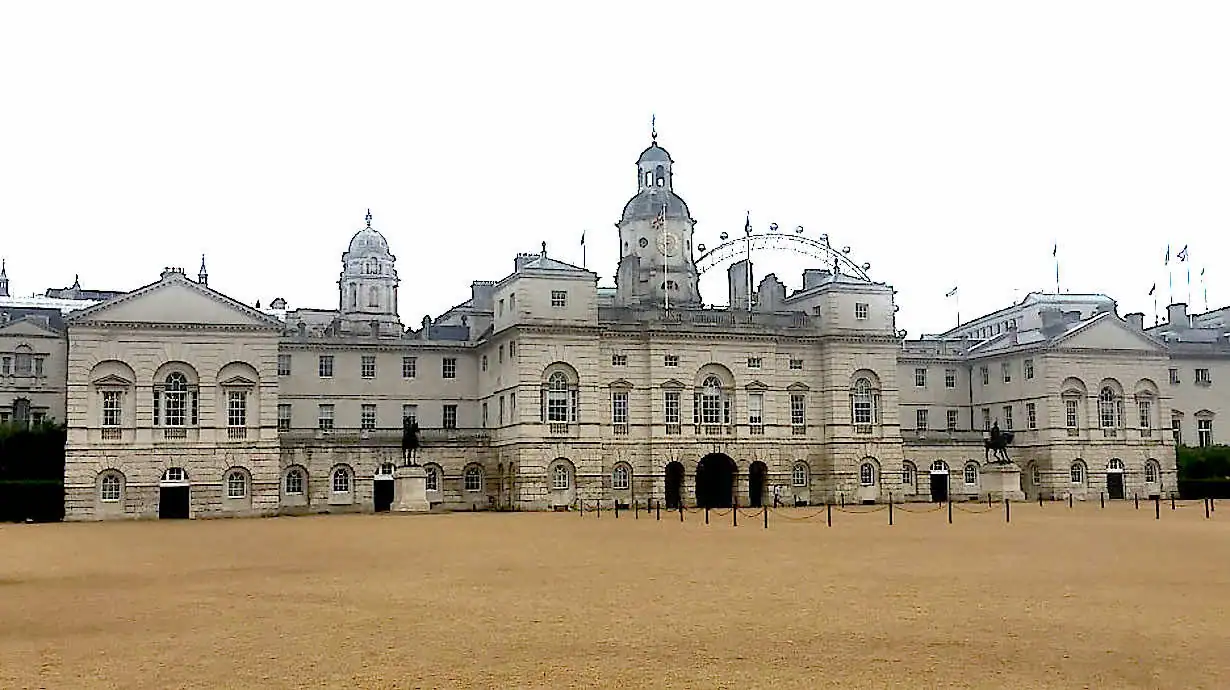 Photo: londondrum.com
Photo: londondrum.comOld Tudor maps of Whitehall Palace show that this was once the site of the tiltyard where Henry VIII held his jousting tournaments and the long wooden tilt (the central fence that separated the two jousting knights) ran roughly across the middle.
So this is where you need to fire up your imagination a little bit – if there are a couple of tourists riding their Boris bikes across it then fantastic, that will make it easier – picture one of them starting his run up from the Admiralty end whilst the other comes charging in from the Downing Street side, and when they crash in the middle they’ll be clashing in the same spot where chivalrous knights did all those centuries ago.
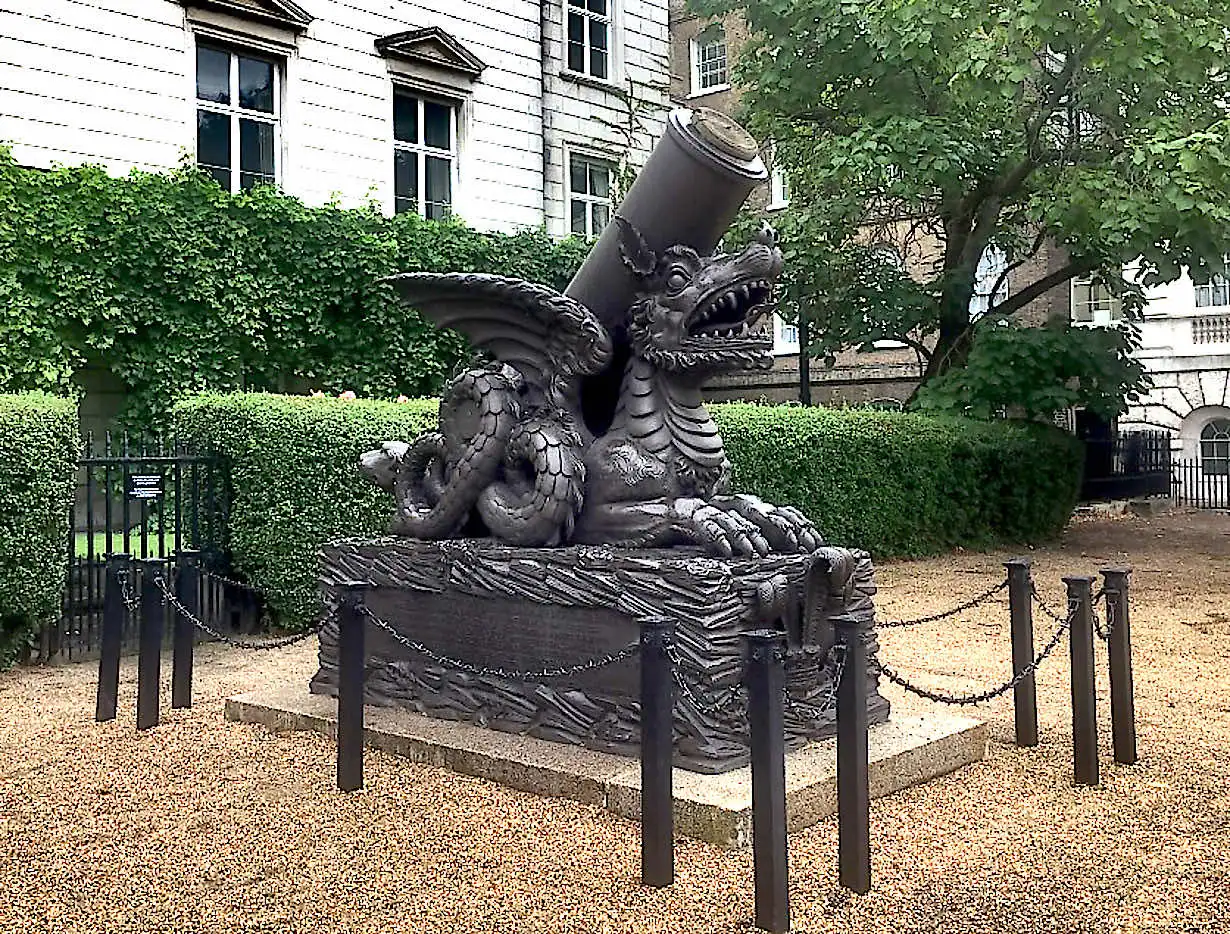 Photo: londondrum.com
Photo: londondrum.comThere are a couple of military souvenirs worth finding around the edge – on the left is a 500-year-old Turkish cannon that we managed to capture from the French in 1801 and over the other side is a mortar that we grabbed at the Spanish siege of Cadiz in 1812.
Admiralty Citadel – Operations centre during World War II
 Photo: londondrum.com
Photo: londondrum.comThat ugly ivy covered building on the far left was hurriedly built during the Second World War as a bombproof operations centre for the navy. Its concrete roof is supposed to be 20-foot thick and if you look at the top righthand corner then you can see a couple of holes where the soldiers would have positioned their machine guns had the Germans managed to parachute into Horse Guards.
Admiralty Building – First Lord of the Admiralty’s old residence
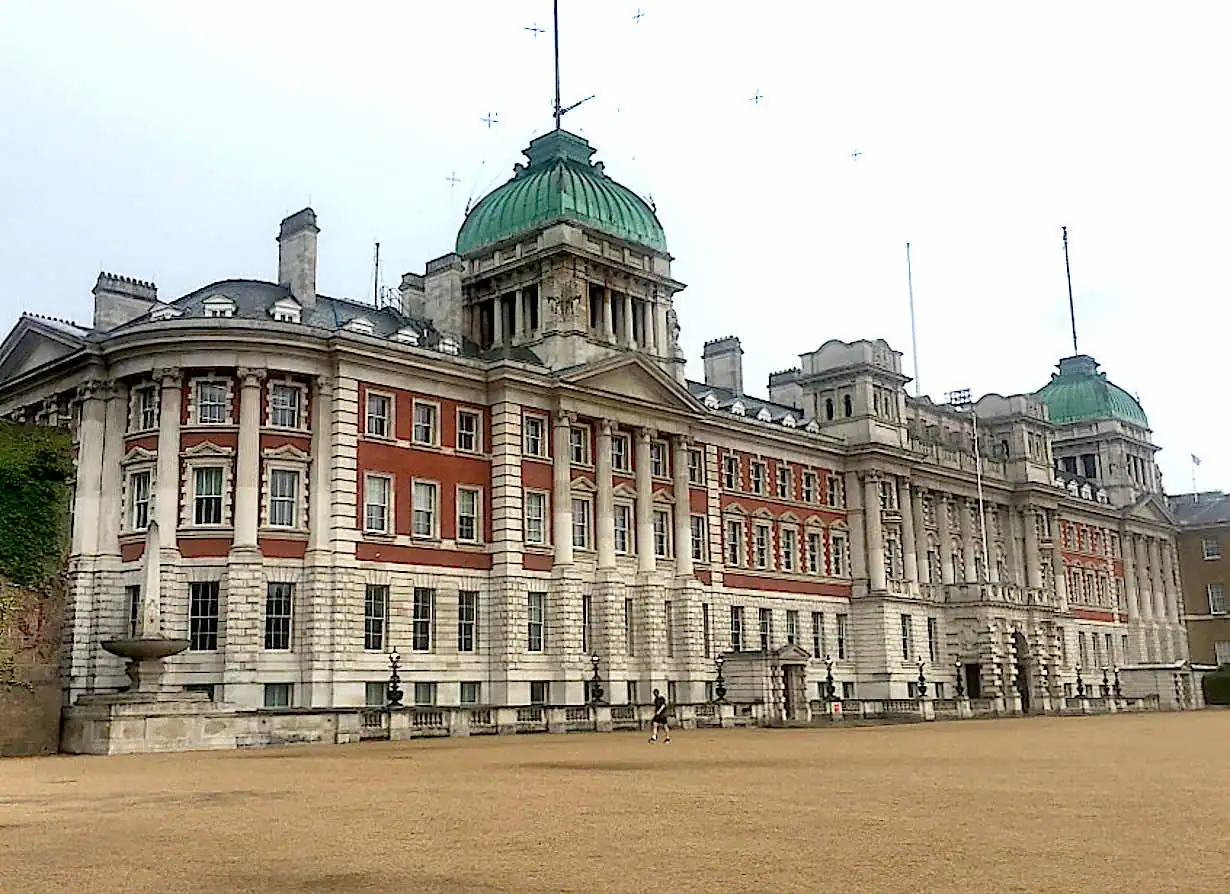 Photo: londondrum.com
Photo: londondrum.comNext-door is the much more impressive-looking Admiralty Building. These days it’s just a load of government function rooms and ministerial flats but from the 1780s right up until 1964 it served as the official residence of the First Lord of the Admiralty. It’s most famous resident was Winston Churchill who slept here during his two stints in World War I and II. When he became Prime Minister he had to swap it for the pokey little house across the other side of the parade ground – No.10 Downing Street.
Household Cavalry Museum & Barracks
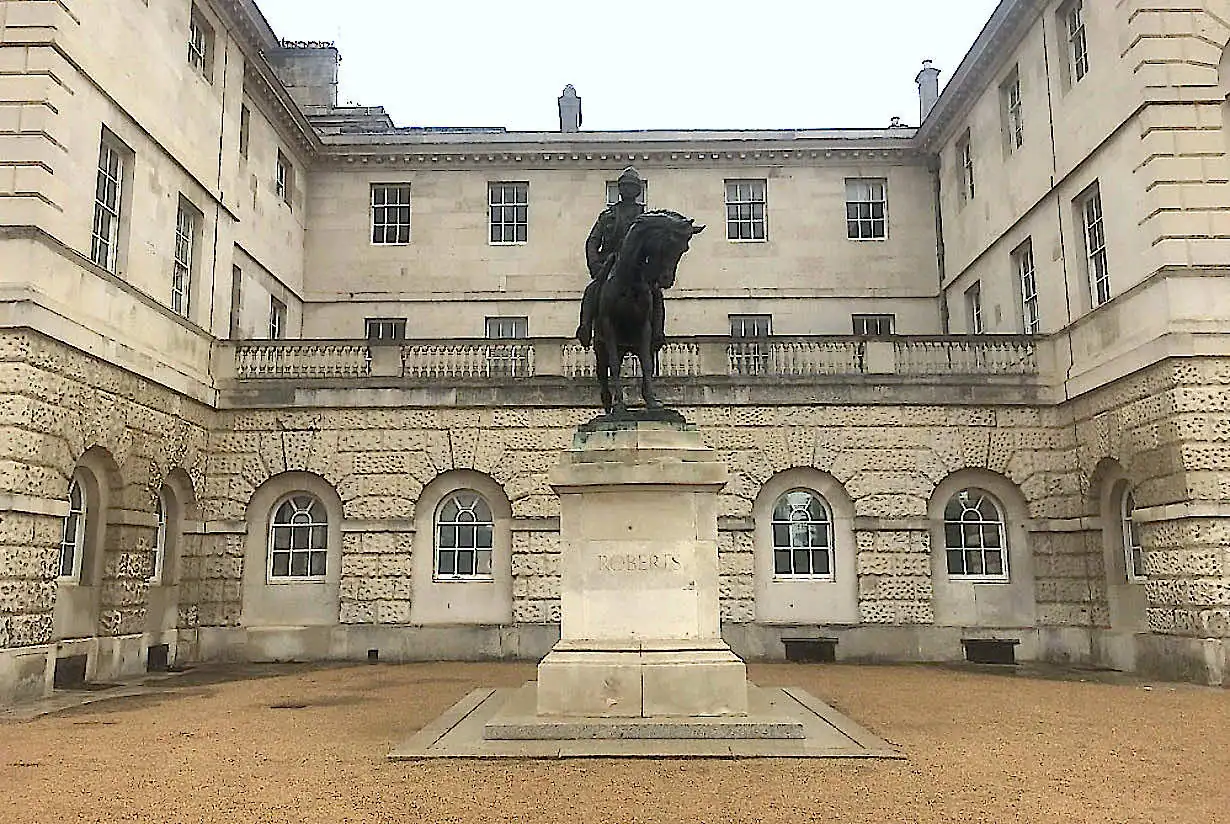 Photo: londondrum.com
Photo: londondrum.comAfter that is the old Household Cavalry barracks which now houses seventeen horses and a museum. (Many tourists are surprised to find a working stable just five hundred feet from Downing Street, but if you enter the museum then you can see them being groomed through a plate glass window.)
The next building after the clock tower is Dover House (the Scotland Office), and the white one round the corner is part of the old Treasury Building, which now houses the Cabinet Office.
Brick wall in front of No.10 Downing Street’s garden
It starts to get a lot more interesting when you reach that brown brick wall, because over the other side of that is the Rose Garden of No.10 Downing Street.
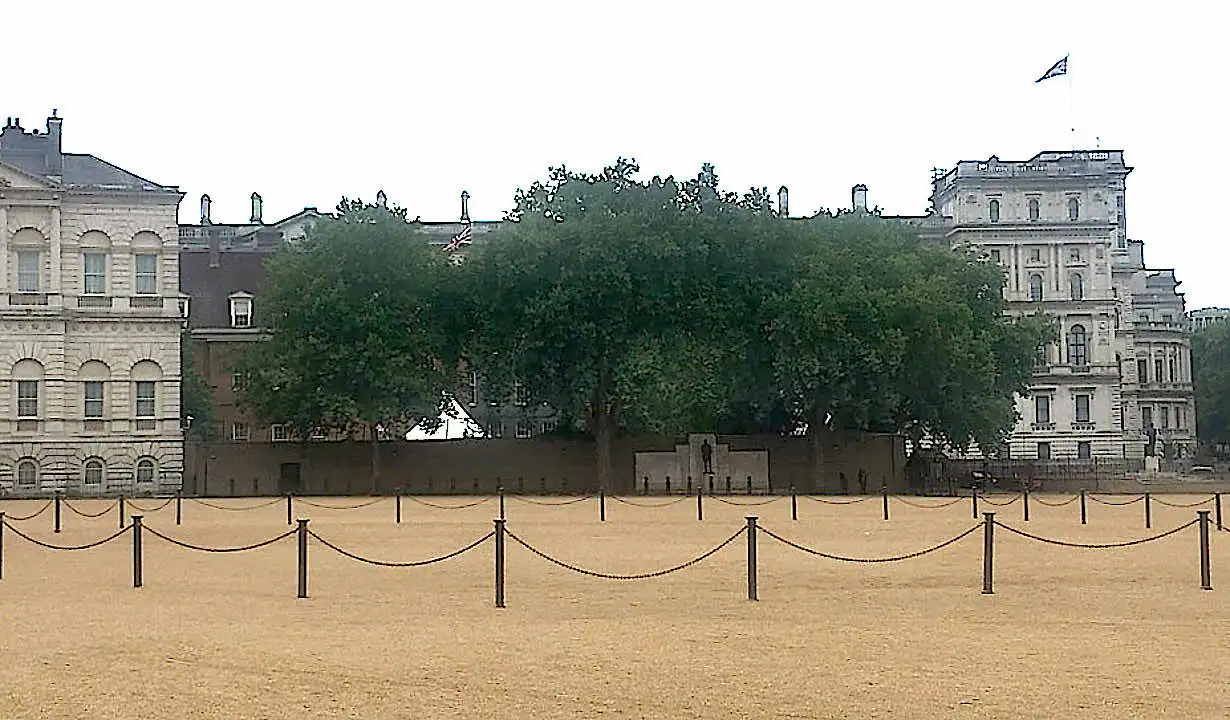 Photo: londondrum.com
Photo: londondrum.comThe main part of No.10 is hidden completely out of sight behind that brown brick building at the front, and the black backs of Nos 11 and 12 will probably be obscured by leafy trees, but if you can see the windows on the top floor of that brick building then you’ll be looking at a couple of drawing rooms and the Prime Minister’s old bedroom on the righthand corner. The Prime Minister’s present bedroom is supposed to be the one next-door to that, on the side that faces Mountbatten Green.
I don’t recommend going anywhere near that brick wall because it’s guarded night and day by gun-toting cops. Don’t try and point your selfie-stick over the top, for example, because those serious-looking policemen will have you on the floor in five seconds.
I also recommend… If you enjoy this then try Downing Street (you can walk it in less than 3 mins) and Parliament Square (you can walk it in 6 mins). You might like to read my review of the two parades: the Dismounting Ceremony and Changing the Guard at Horse Guards. The Household Cavalry Museum is worth a visit, and the Churchill War Rooms is only two minutes round the corner
How to get to Horse Guards
| Fare zone | Cash | Oyster & Contactless | Travelcard | ||||
|---|---|---|---|---|---|---|---|
| Single fare | Single fare | Daily cap | One day | ||||
| Peak | Off-peak | Peak | Off-peak | Anytime | Off-peak | ||
| Bus (all zones) | n/a | £1.75 | £5.25 | £6 | |||
| Train (zone 1) | £7 | £2.90 | £2.80 | £8.90 | £8.90 | £16.60(zone 1-4) | £16.60(zone 1-6) |
| Train (zone 1-2) | £7 | £3.50 | £2.90 | £8.90 | £8.90 | ||
| Train (zone 1-3) | £7 | £3.80 | £3.10 | £10.50 | £10.50 | ||
| Train (zone 1-4) | £7 | £4.60 | £3.40 | £12.80 | £12.80 | ||
| Train (zone 1-5) | £7 | £5.20 | £3.60 | £15.30 | £15.30 | £23.60(zone 1-6) | |
| Train (zone 1-6) | £7 | £5.80* | £3.80* | £16.30 | £16.30 | ||
| * Journeys between zone 1 and Heathrow are always charged at the peak rate. Prices are correct as of | |||||||
Related articles and events
Search for parades in London, parades today, tomorrow, this weekend and during May and June, or see what’s on in Westminster
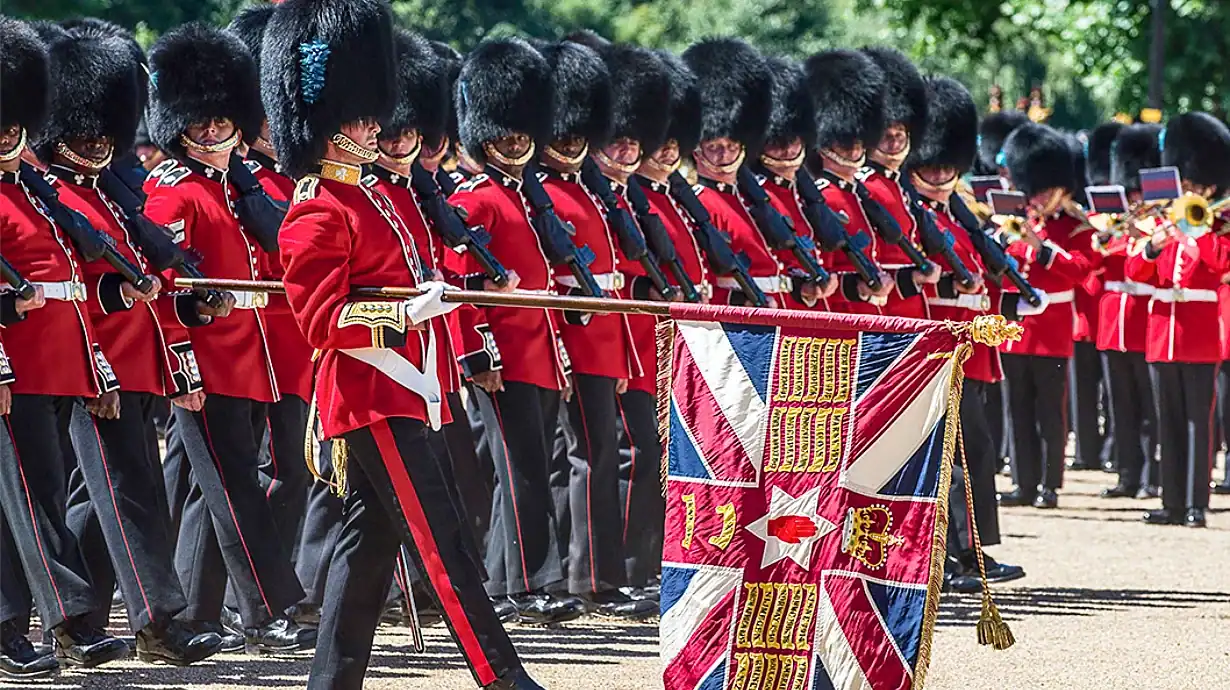
 Twitter
Twitter Facebook
Facebook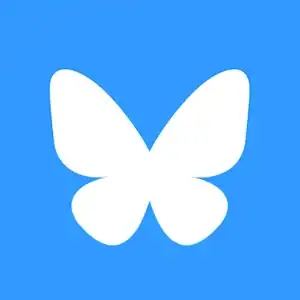 Bluesky
Bluesky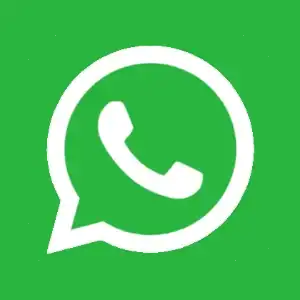 WhatsApp
WhatsApp Email
Email




